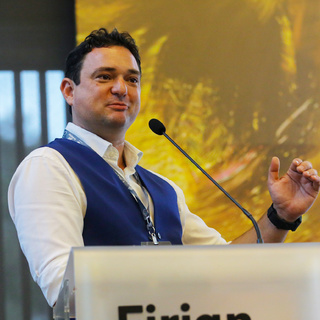Electrification brings a significant paradigm shift of the mobility eco-systems for all sectors, no matter whether road transport or shipping.
Before going too much into the obvious though, let’s move quickly to some pertinent questions that we at CharIN look at:
- What are the differences in challenges between the sectors when it comes to making that transition at all levels – administrative, technological, market absorbance, etc?
- And, what can one sector learn from the others?
Seems fair to ask these questions considering that sectors are moving at different speeds in electrification, and our work is focused on providing solutions to facilitate the transition for all.
But, before we turn this into a 10,000-word report (and the editorial team refuses publishing anything else ever again), let us focus the joystick on one sector – aviation.
There are in essence two “airside-vehicle” dimensions of electrification when it comes to aviation. Ground handling services and aircraft. The former is quite diverse in its implementation in that it depends on the airport uptake obligation, interest and capacity. There are funds, for example, furnished by the European Commission under the Connecting Europe Facility for ground support equipment (GSE), but I also know of airports who have bought electric (gate to plane) passenger busses using government funds which are now sitting in storage because operations capacity for charging is “not quite there yet” and the charging infrastructure is not as “established”. Sound familiar?
Other airports are more able to implement the relevant sustainability and modernity ambitions inherent to the age of transition. Yet, there are risks. As the Alternative Fuels Observatory correctly states, for example, downtime in equipment can be particularly challenging as it can cause significant disruptions. But, the trip to electrification is not as far as a bus ride to the plane on the other side of the airport might imply. There are quite a few GSEs buzzing around the aircraft already: container and belt loaders, lavatory and water trucks, pushbacks, etc.
The dynamics surrounding the electrification of aircraft obviously face their own challenges, both on the ground and in the sky. The role of the airport is often underestimated, especially when we look at challenges (now and in the future) of grid capacity, charging time in light of slots, adapted infrastructure to plane design, etc. But, there are airports already gearing towards battery charging.
In the aircraft segment, progress at the moment remains in the early states and (I say this not only because I am aviation enthusiast), it is beyond exciting because it feels like the age of pioneering to the tone of the Wright Brothers. Getting off the ground is not always so easy but with commercial technology focusing on hybrid aircrafts (both plug-in and non-plug-in) or eVTOLs, regional transport for passengers and cargo is become more and more a reality.
Some technological challenges obviously include battery weight and energy efficiency. From the industry side there are also scalability challenges. On the regulatory side the aviation industry is heavily regulated with new technologies requiring extensive testing and certification to meet safety standards. I am by no means looking to take away the enthusiasm with the challenges, and I will not drag you to: “there is opportunity in it all”.
Instead, here four things, I believe we as industry, governmental and societal stakeholders should focus on:
- The relationship between airport and aircraft in terms of infrastructure roll-out and interoperability.
- Even though efforts concentrate on short haul for the moment, the look at regional solutions needs a global approach; not only to facilitate transfer of technology and trade. A quick analogy: Even the migratory patterns of different bird species intersect.
- Going beyond governmental financial incentives for the pillars of the aviation eco-system’s electrification, and coupling it instead with a healthy regulatory approach which favours technological solutions (rather than punitive taxation for the sector), whilst sustaining the highest safety standards.
- Joining the CharIN Tuesday on 29 October (titled: Beyond Road Transport: What are other sectors doing to join the transition?) where we will further explore aviation, but also in comparison to other sectors such as shipping, agriculture and rail. Thanks for tuning in and I look forward to welcoming you on the day!

Register for the CharIN Tuesday EUROPE Triplet: "EU Post-Elections"
Part 1: October 22, 2024 - A Geographic Snapshot on the State of Affairs in e-Mobility Roll-out.
Part 2: October 29, 2024 – Beyond Road Transport: What Are Other Sectors Doing to Join the Transition?
Part 3: November 5, 2024 – Will EU Politics and Policy for E-mobility Stand its Course or Change Direction
News Info
Published on: 10/01/2024

